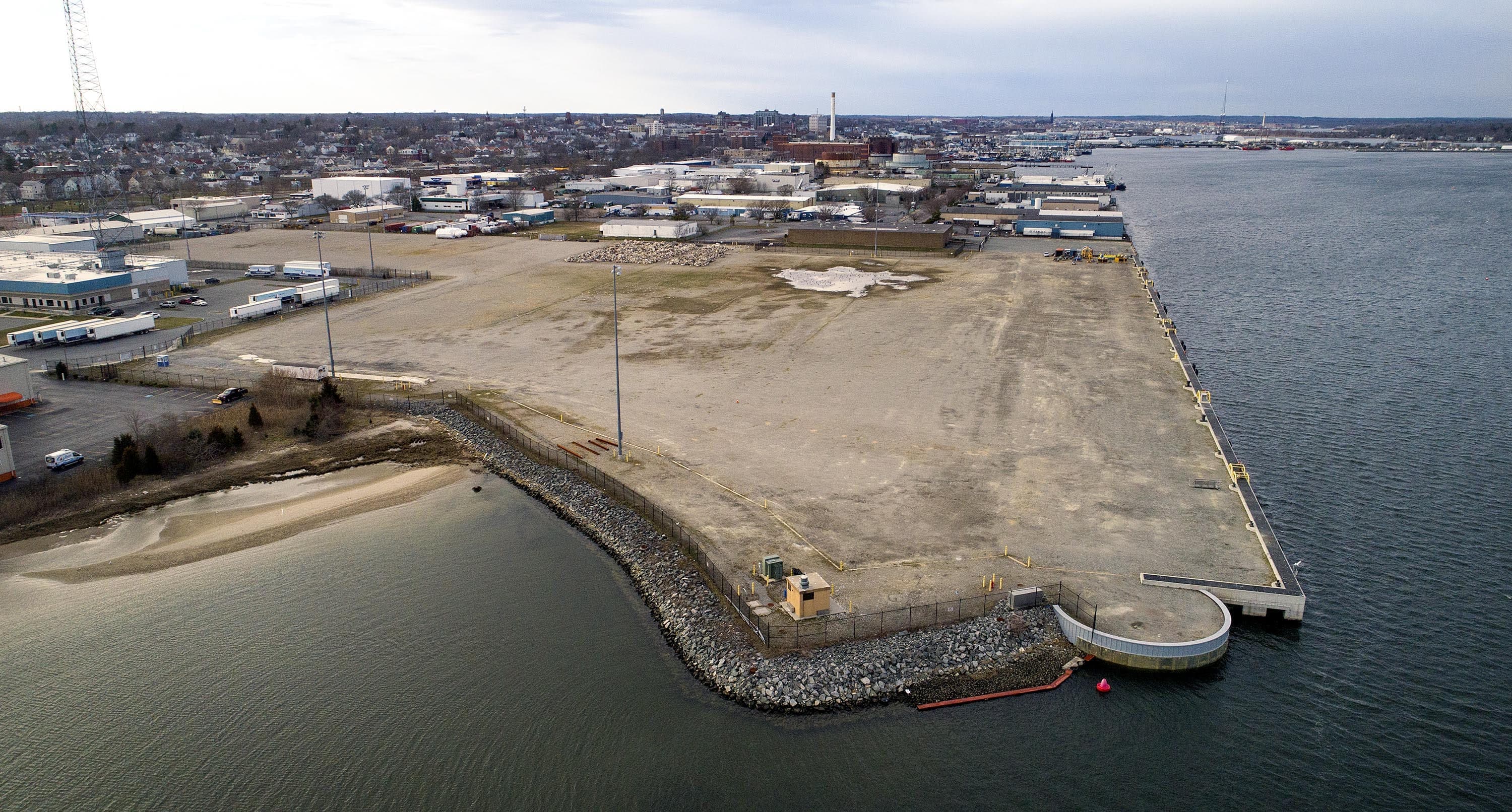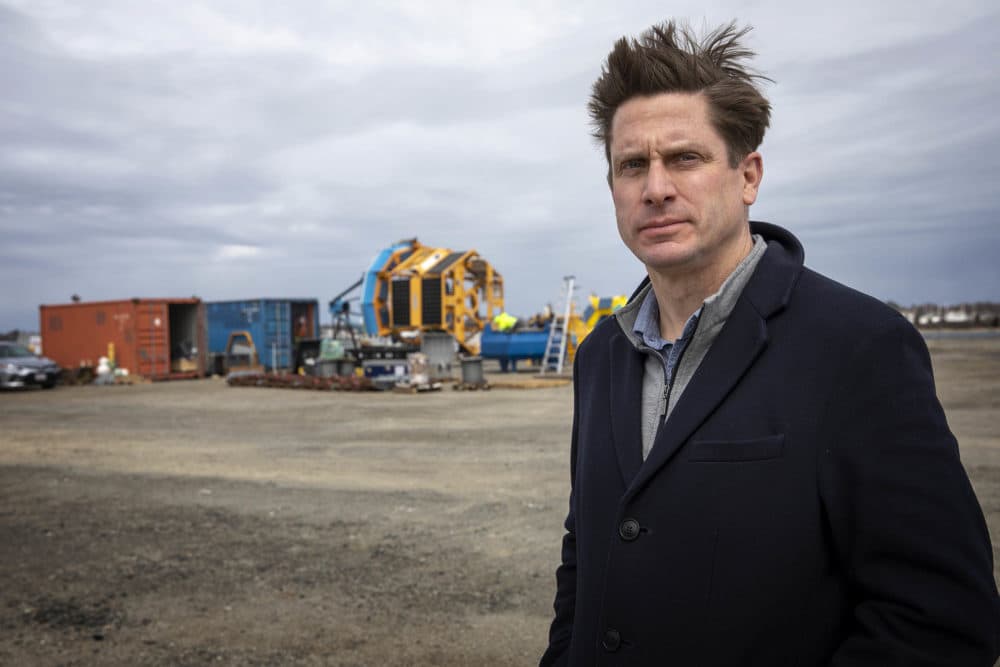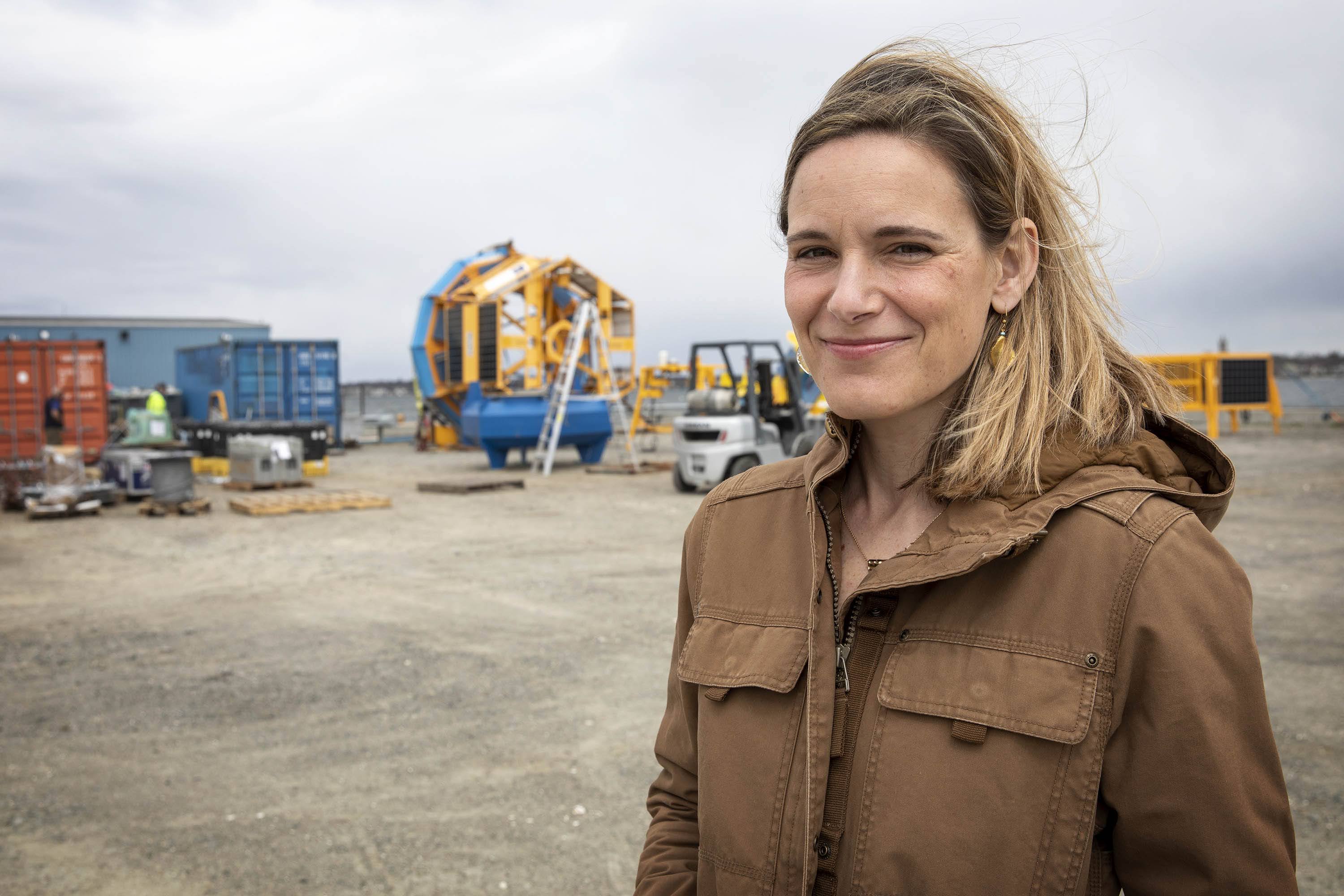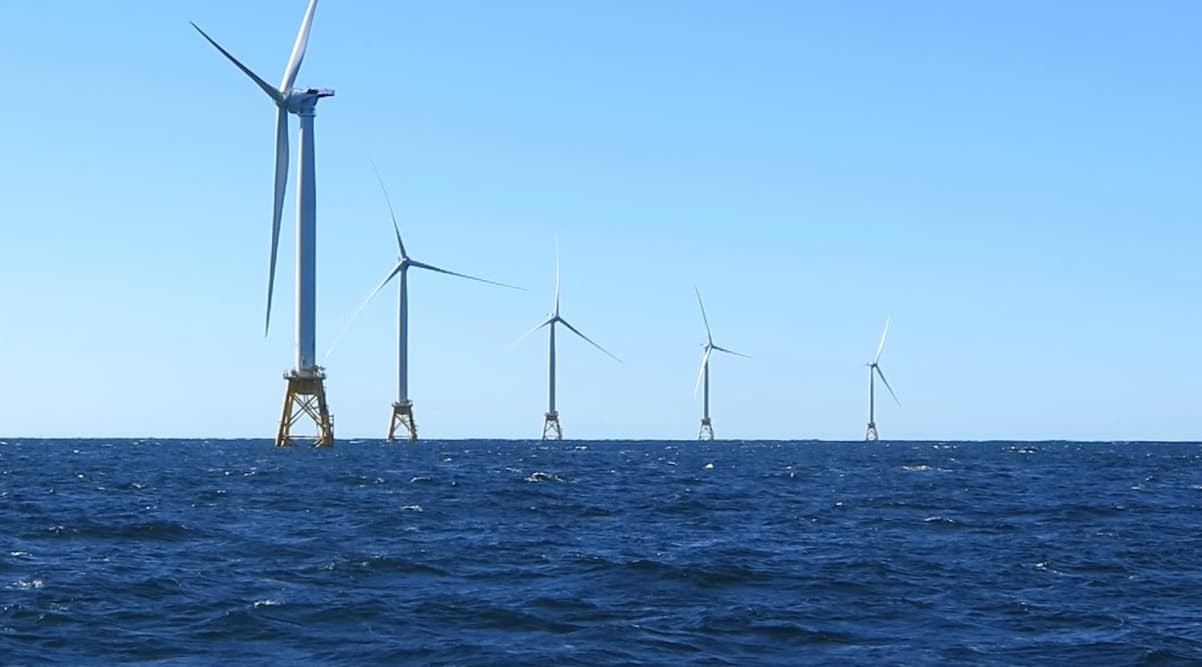Advertisement
After Years Of Uncertainty, Expected Decision On Vineyard Wind Could Launch New Industry
Resume
New Bedford's Marine Commerce Terminal is a huge spread of open concrete jutting into the harbor. On a recent day, a few refrigerated trucks were unloading seafood at a processing plant next door, but the terminal itself just looked like a giant empty parking lot. As the wind swept across the vast space, the biggest action was the crowds of seagulls hunkered down, squawking at each other.
This is where Bruce Carlisle wants you to use your imagination.
"In my mind's eye, I see the tower sections stacked and lined up. I see the blades all ready to go. I see forklifts and cranes and crawlers and just all sorts of activity," says Carlisle, managing director of offshore wind at the Massachusetts Clean Energy Center, or MassCEC.

MassCEC is a quasi-governmental economic development agency, with a mission to spur the growth of clean energy jobs and infrastructure in the state. A little over a decade ago, MassCEC bet big on offshore wind and built the Marine Commerce Terminal. The terminal is about the size of 22 football fields and was designed to withstand the weight required to partially assemble offshore wind turbines. To date, it remains the only staging area of its kind in the country.
"We've known for a while that offshore wind presents a significant renewable energy resource," Carlisle says. "It was really only a matter of time."
This week, MassCEC's bet may finally start to pay off. The federal government is expected to make a major decision about Vineyard Wind, the first large-scale wind farm in the United States, slated to be built off the coast of Martha’s Vineyard. The ruling represents the last big obstacle the project needs to overcome before construction can begin.
"When Vineyard Wind comes in here, we are going to be realizing the work and the investments and the groundwork that we've laid."
Bruce Carlisle, managing director of offshore wind, MassCEC
The decision could pave the way for a massive offshore wind industry up and down the Atlantic Coast, but it comes after years of uncertainty.
Offshore wind never was a sure thing in the U.S. In the early 2000s, a company called Cape Wind proposed building a wind farm off the coast of Cape Cod. MassCEC expected Cape Wind to be the first company to lease the New Bedford terminal, but after years of public opposition over how the turbines would affect ocean views, that project fizzled, and so did talk about a big offshore wind industry on the East Coast.
The New Bedford terminal has stayed afloat by leasing the port area to other marine cargo operations, and it’s served as the staging ground for onshore wind and solar projects.
"That's been sufficient to keep us moving," Carlisle says. "When Vineyard Wind comes in here, we are going to be realizing the work and the investments and the groundwork that we've laid."
In 2016, Massachusetts Gov. Charlie Baker signed a law saying that utility companies in the state need to start buying power from offshore wind within a decade. Vineyard Wind won the initial round of project bids, and is now slated to become the first big offshore wind farm in the country. Its 62 turbines will sit in the water about 12 miles off of Martha’s Vineyard, and produce enough electricity to power 400,000 homes every year.
If the federal government gives the company a favorable decision this week, Vineyard Wind CEO Lars Pedersen says they could start bringing large cranes, turbine blades and electrical components to the Marine Commerce Terminal sometime next year.
"I would call it a once-in-a-generation opportunity to build a new industry, create manufacturing and construction sites, and also deliver clean, affordable energy," Pedersen says.

Getting here has been a rollercoaster. Vineyard Wind submitted their plans to the federal government for approval in 2017. The review process was supposed to take two years, and in the meantime, several other East Coast states opened bidding for large wind projects off their coasts. It seemed like the much-awaited offshore wind revolution was finally beginning.
But right before Vineyard Wind’s final environmental review was set to come out, the Trump administration announced it was putting the project on hold.
"We got a call from the Secretary of the Interior’s office telling us there had been a change and there were new concerns about the project," recalls Kathleen Theoharides, the state Secretary of Energy and Environmental Affairs. She says federal officials told her that with so many wind projects in the pipeline, they wanted to take a step back and examine the cumulative impacts of the industry.
"That sort of turned into this long summer where we were flying back and forth up and down to D.C., trying to save the project," she says.
Despite Theoharides' efforts, the project remained in limbo, even though the Trump administration was removing similar hurdles for fossil fuel industries.
"It felt like they were picking one industry to really focus in on with a lot of scrutiny of the environmental impacts while the oil and gas industry was getting a free pass," Theoharides says.
The delay wasn’t just inconvenient to Vineyard Wind. It threatened to upend the project’s supply chain and construction plans. And with the failed Cape Wind project still top of mind for many, the Trump administration’s decision once again raised questions about the future of the industry.

The election of Joe Biden changed that.
A few weeks ago, U.S. Energy Secretary Jennifer Granholm announced that the Biden administration was going all in on offshore wind. They put Vineyard Wind back on track and promised to jumpstart the industry by speeding up the review process, opening new lease areas, and helping to create tens of thousands of union jobs.
The goals are ambitious. But not everyone is thrilled.
"They may play it down like there's no effect on the ecosystem. I can't see how it can't, when you start putting hundreds and hundreds of these poles in the water," says Peter Anthony, who has worked in the New Bedford fishing industry for 40 years and now serves as treasurer for the seafood supply company Eastern Fisheries. "We've been here forever. The fishing communities have been fishing these areas because they're fertile fishing areas."
Anthony says many fishermen have felt blind-sided by the federal government’s support for offshore wind. And while companies like Vineyard Wind have made some accommodations to the fishing industry — like increasing the space between turbines in the water — he still feels like it’s all moving too quickly.
Any day now the Interior Department will approve, deny, or suggest changes to Vineyard Wind’s construction plan. The company will need a few small permits and federal sign-offs afterwards, but this represents the last big hurdle for the project. If the ruling is favorable, which seems likely, Vineyard Wind could start offshore construction next year and deliver power by the end of 2023.

"I'm sure they'll be drinking champagne and pumping their fists and they will be all happy about it, but I think in the fishing community they're going to look at it as a loss," Anthony says.
Anthony says fishermen feel like the country has decided to trade one renewable resource — seafood — for another: wind energy. And he thinks it’s a shame.
Lars Pedersen of Vineyard Wind says he knows some fishermen are not happy, but he feels that the two industries can coexist. And he says the project his team has proposed — and that the government seems likely to approve — is an example of that.
"When you just look at the fundamentals for this industry: the strong winds, the shallow water, the amount of people living along the coastline, the states’ ambitions of going towards a net-zero target, there's no way you don't have offshore wind as part of that equation," Pedersen says.
The states and the Biden administration are, in fact, relying on offshore wind to help mitigate climate change. And if their plans are fully realized, the entire East Coast energy system could be radically transformed.
This story is part of Covering Climate Now, a global journalism collaboration of more than 400 news outlets committed to better coverage of the climate crisis. This year's theme is "living through the climate crisis."
This segment aired on April 19, 2021.
